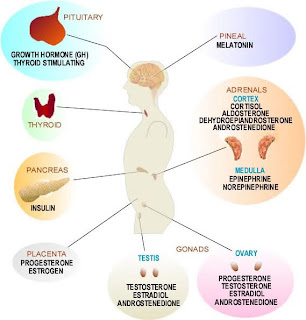Whenever I feel short, compared to my peers at school, I always wish to be tall. Then there's times when I'm happy with my height. However, there's not much we can do about our height now because our growth hormones have stopped producing, or have minimized production. When the growth hormones in our bodies produce too little hormones though, a disease called Dwarfism occurs.

Dwarfism is generally defined as an adult height of 4 feet 10 inches or
less (147 centimeters). The average adult height among people with
dwarfism is 4 feet (122 cm).
There are two common types of Dwarfism:
- Disproportionate
- Proportionate
The difference between the two is pretty self explanatory but nonetheless:
- Disproportionate Dwarfism typically means when some parts of the body are small, and others are of average size or
above-average size. Disorders causing disproportionate dwarfism inhibit
the development of bones.
- Proportionate Dwarfism is basically all parts of the body are small to the same degree and appear to be proportioned like a body of average stature.

The basic reason for dwarfism is that the growth hormone in the body does not produce enough of itself and thus the bones and muscles do not develop as much. However, another common reason for dwarfism is a disorder called achondroplasia,
which causes disproportionately short stature. This disorder usually
results in the following. Another cause of disproportionate dwarfism is a rare disorder called spondyloepiphyseal dysplasia congenita (SEDC).
Proportionate dwarfism results from medical conditions present at
birth or appearing in early childhood that limit overall growth and
development. Therefore, the head, trunk and limbs are all small, but
they are proportionate to each other. Because these disorders affect
overall growth, many of them result in poor development of one or more
body systems.
Growth hormone deficiency is a relatively common cause of
proportionate dwarfism. It occurs when the pituitary gland fails to
produce an adequate supply of growth hormone, which is essential for
regular childhood growth.
Most dwarfism treatments don't increase stature but may alleviate problems caused by complications.
Surgical procedures that may correct problems with bones in people with disproportionate dwarfism include:
- Inserting metal staples into the ends of long bones where growth
occurs (growth plates) in order to correct the direction in which bones
are growing
- Dividing a limb bone, straightening it and inserting metal plates to hold it in place
- Inserting rods or staples to help correct the shape of the spine
- Increasing the size of the opening in bones of the spine (vertebrae) to alleviate pressure on the spinal cord
Some people with dwarfism elect to undergo limb-lengthening surgery.
With this procedure, the surgeon divides a long bone into two or more
sections, separates the sections slightly and braces the bone and limb
with external metal "scaffolding." Pins and screws on this frame are
periodically adjusted to keep tension between the sections, enabling the
bone to grow back together gradually into a complete but longer bone.

This procedure is controversial for many people with dwarfism
because, as with all surgeries, there are risks, and because the
"correction" in stature may imply there's something wrong with being
short.
Sources:
Source 1
Source 2
Source 3
 Endocrinology is the study of how hormones affect the body. Hormones are mostly made in the glands and are responsible for things such as metabolism, reproduction and other things pertaining to a being's physical and emotional health. The main glands we have are Pituitary, Pineal, Adrenals, Thyroid, Pancreas, Testis/Ovaries, Hypothalamus, and Thalamus. Each gland has a specific function for relaying and influencing hormones to affect the body.
Endocrinology is the study of how hormones affect the body. Hormones are mostly made in the glands and are responsible for things such as metabolism, reproduction and other things pertaining to a being's physical and emotional health. The main glands we have are Pituitary, Pineal, Adrenals, Thyroid, Pancreas, Testis/Ovaries, Hypothalamus, and Thalamus. Each gland has a specific function for relaying and influencing hormones to affect the body. 
